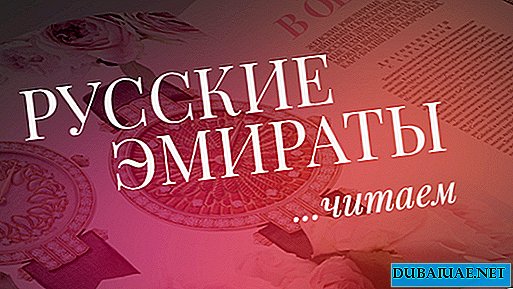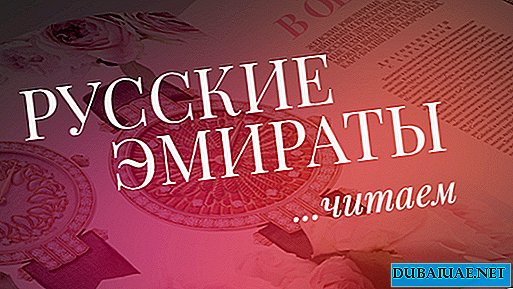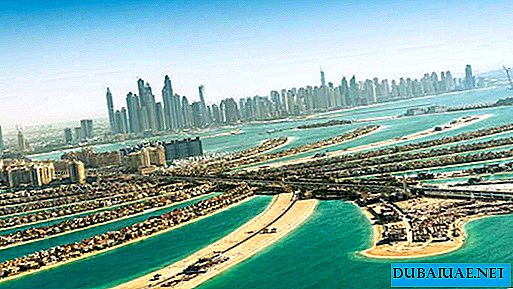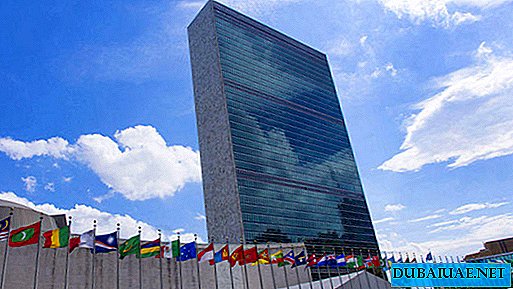Text: Victor Lebedev
Viktor Lebedev, an oriental journalist, has worked as an ITAR-TASS correspondent for over thirty years in various Arab countries - Syria, Egypt, Sudan, Tunisia, Yemen. Almost half of this term lives and works in the United Arab Emirates. Victor Lebedev is the author of the book “World of the Emirates” from the series “Arabian Arabesques”, the first winner of the International Prize named after journalist-orientalist Viktor Posuvalyuk. The permanent author of many country-specific materials published in our journal, Viktor Lebedev is also a literary translator of the verses of the UAE Vice President and Prime Minister, ruler of Dubai, Sheikh Mohammed bin Rashid Al Maktoum. Poems for the Russian edition were personally selected by the high-ranking poet himself.
 The origins of the creation of Saudi aviation were also Russian specialists. The names of two of them are known. These are white emigrants: pilot Nikolai Naydenov and aircraft technician Maximov. At the same time, two more Russian aviators worked in the kingdom, but there is no exact information about them. Over time, and perhaps with the participation of readers of the magazine in the Emirates, our compatriots in Egypt, as well as with the help of the Russian embassy in the Saudi capital and the Russian Consulate General in Jeddah and with the assistance of the Peninsula Falcon Aviation Museum in Riyadh, we will succeed establish their full names and get more information about their work in the kingdom.
The origins of the creation of Saudi aviation were also Russian specialists. The names of two of them are known. These are white emigrants: pilot Nikolai Naydenov and aircraft technician Maximov. At the same time, two more Russian aviators worked in the kingdom, but there is no exact information about them. Over time, and perhaps with the participation of readers of the magazine in the Emirates, our compatriots in Egypt, as well as with the help of the Russian embassy in the Saudi capital and the Russian Consulate General in Jeddah and with the assistance of the Peninsula Falcon Aviation Museum in Riyadh, we will succeed establish their full names and get more information about their work in the kingdom.
Russian aeronautical masters arrived in Jeddah on June 3, 1934 at the invitation of the Saudi leadership to check the technical condition of the captured trophies at the disposal of the kingdom and put them in order. Repair of one of the aircraft was completed a month later, and Nikolai Naydenov, frightening away camels spiked by dry thorns, made the first flight from the port of Jeddah on the Red Sea to the Taif mountain resort, located on the way from Jeddah to Mecca at an altitude of 900 meters above sea level .
It is interesting to know how the further fate of Russian aviators from white emigration to Saudi Arabia developed, when the “red Moscow” established cooperation with the kingdom, which was gaining geographical proportions and economic strength. No less interesting is the story of the appearance of aircraft in the country, which was going through the most difficult stage in its new history in the face of complex internal struggles and civil strife, fragmentation, poverty and medieval life.
According to the Saudi Aviation Museum Peninsula Falcon, the first aircraft appeared in the sky above the Arabian Peninsula in 1914, when one of the British aircraft, causing a panic of local residents, flew around Jeddah. After 10 years, the residents of this area had to face military aviation when the Meccan sheriff’s plan, which Abdel Aziz Al Saud was fighting for power, made reconnaissance flights over the positions of the soldiers of the founder of the Saudi kingdom, advancing on the holy Islamic capital. A year later, during the blockade of Jeddah by supporters of Al Saud, his soldiers managed to bring down one of the sheriff’s planes, having achieved their first success in the fight against new military heavenly equipment.
Taking Jeddah and Medina, the warriors of the unifier of the Arabian lands took control of the Hijaz region. Among their trophies were six British aircraft "de Havilland D.H.9A" (DH-9), which were produced from the end of 1917 and were in service with the Air Force of Great Britain and the United States until the end of the 20s of the last century.
The history of the origin and development of aviation in Saudi Arabia was tracked by Nikita Demin, student of the East Department of St. Petersburg State University. In his first study on this subject, a novice orientalist notes that in the 1920s, Abdel Aziz Al Saud already had an idea of the capabilities of aviation, which played an important role in the defeat of the Ottoman Empire in Hijaz at the end of the First World War.
 Leading the forces that rejected technological progress, from watches to telegraphs, the Saudi leader, however, understood the great importance of aviation to consolidate its influence in the vast possessions controlled by it. He appealed to the British government to send pilots instructors and technicians to use the captured aircraft in order to organize postal service in the country. Specialists arrived in Jeddah, inspected the aircraft and concluded that five of the six airplanes that the new ruler of Hejaz and Nejd had at their disposal could be restored. Two DH-9 aircraft were repaired, put on the wing and made several sorties.
Leading the forces that rejected technological progress, from watches to telegraphs, the Saudi leader, however, understood the great importance of aviation to consolidate its influence in the vast possessions controlled by it. He appealed to the British government to send pilots instructors and technicians to use the captured aircraft in order to organize postal service in the country. Specialists arrived in Jeddah, inspected the aircraft and concluded that five of the six airplanes that the new ruler of Hejaz and Nejd had at their disposal could be restored. Two DH-9 aircraft were repaired, put on the wing and made several sorties.
In the United Kingdom, Westland Wapiti's new, more advanced production aircraft were ordered, which first flew into the British sky in 1927. These biplanes were supposed to be used for the transport of goods and for putting things in order in a country still in a state of civil war. The order of these aircraft, which were in service with a number of countries until the outbreak of World War II, was a serious application by the Saudi leadership for the development of the sky using modern air equipment.
The first Saudi air squad consisted entirely of foreigners who were difficult to take root in harsh climatic conditions and unsettled living conditions in medieval society, which even European trousers unusual for Bedouins irritated. Over time, only two pilots remained in the squadron - a British and a German.
They participated in military operations against Yemen in areas adjacent to the possessions of Abdel Aziz Al Saud, where interstate borders were still being established. After in September 1932 a German pilot was shot down over Yemen, the British preferred to return to their homeland. The detachment was left without pilots.
in September 1932 a German pilot was shot down over Yemen, the British preferred to return to their homeland. The detachment was left without pilots.
By that time, it had already been decided to build an airfield in Taif and place the main base for future Saudi air forces there. In November 1934, writes Nikita Demin, two more Russian emigrant specialists arrived in Taif. The construction of the air force base went quickly. In 1935, all three Wapiti aircraft were transferred to it. The question arose of training national personnel in the field of aeronautics.
The first small group of Saudis was trained in Italy and continued to improve their flight skills at home under the supervision of Italian instructors on Caproni Ca-100 training airliners, which were unassembled and delivered to Jeddah in May 1936. Naydenov and Russian aircraft continued to work under the contract, training national flight personnel. Taif remained an air base. From here, Saudi aviators made their first flights over the cities of their country. Organized with the assistance of Russian experts, they went down in history, which is kept by the Sokol Peninsula Aviation Museum in Riyadh. The museum records the name of the first Saudi who printed the sky over Jeddah in 1924. He was a native of Mecca Abdel Salam Sarhan, who made a 20-minute flight over the minarets of the summer Saudi capital. A year later, another Saudi pilot, Hassan Nazer, performed a similar flight over Jeddah. In the summer of 1936, the Saudis began to fly long distances, and on August 25 the first flight of the Saudis over Mecca took place, over which the Gentiles were not allowed.
Led by Naydenov saudo Russian pilots trained in Italy mastered the Caudron-Renault Pelican monoplane, donated to King Abdel Aziz by the French government. The aircraft was converted into an ambulance for the needs of the ruling family and could take on board three passengers.
Russian pilots trained in Italy mastered the Caudron-Renault Pelican monoplane, donated to King Abdel Aziz by the French government. The aircraft was converted into an ambulance for the needs of the ruling family and could take on board three passengers.
On the instructions of the Saudi side, a group of Russian specialists led by Naidenov conducted an inspection of the technical condition of three Wapiti aircraft purchased in 1929 in 1936 and concluded that these machines can be operated for at least another five years. Russian aircraft managed to restore and return to operation and the fourth Wapiti, which was shot down in 1932 by Yemeni gunners.
With the arrival of two more new Caproni Ca-101s and a four-seat American-made Bellanca high-speed monoplane in Jeddah in April 1937, the number of aircraft in the royal squadron reached twelve: four - Wapiti; three training Caproni Ca-100; three - Caproni Ca-101; one is CaudronRenault Pelican and one is Bellanca. In 1937, the first air parade was held in Jeddah in the presence of King Abdel Aziz. It involved six aircraft, four of which were piloted by Saudi pilots.
In May 1938, under the guidance of Naydenov, a flight was made on four aircraft on the route Jeddah - Yanbu - Jeddah. About 300 km detachment overcame in 2 hours 10 minutes on schedule and without incident. One plane was piloted by Naydenov, the Saudi pilots sat at the controls of the other two, the fourth was controlled by an Italian instructor. Until the end of 1938, similar training flights from the Jeddah airfield were practiced on a regular basis. Throughout 1938, Naydenov, together with Italian instructors, was actively engaged in improving the skills of Saudi pilots.
After Russian specialists restored the Wapiti aircraft, two units were formed in the royal squadron: one consisted of three Caproni Ca-101 aircraft, and the other included Bellanca and four Wapiti. The experience of training Saudi pilots abroad was recognized as successful, but a new batch of cadets did not go to Italy, but to Egypt, where eight Saudi citizens were sent in early 1939.
Thus, the foundation for the further development of aviation in Saudi Arabia was laid before the start of World War II. The country had a small constantly flying squad, two airdromes and national personnel of flight and technical personnel, the level of qualification of which was indicated by the absence of serious air accidents and, especially, disasters. A significant contribution to the creation of the first Saudi Arabia squadron, to the training of national personnel in flight skills and to the skills of servicing and repairing aircraft, was made by four Russians, by the will of fate abandoned in Hijaz.
In 1943, the U.S. government declared Saudi Arabia a vital country for U.S. defense and extended the Lend-Lee Act to it. the. An important moment in the US-Saudi rapprochement was the meeting on February 14, 1945, of President Franklin Roosevelt with King Abdel Aziz aboard the cruiser Quincy. Returning from Russia from the Yalta Conference, the American president made a stop in the Great Gorky Lake region on the Suez Canal and received the Saudi delegation on board his cruiser. In memory of a personal meeting, President Roosevelt presented Abdel Aziz with a 24-seat Douglas Dakota DC-3, considered one of the most successful transport and passenger aircraft of the time, which arrived in Jeddah in April 1945. In September 1945, the king was able to personally verify the merits of this machine, making on board the DC-3 his first flight from Afif to Al-Khawiya near Taif. This plane, which the monarch really liked, made its last flight several years ago during the celebration of the centenary of the formation of the Kingdom of Saudi Arabia according to the Meccan calendar and is now one of the main exhibits in the capital's aviation museum.
the. An important moment in the US-Saudi rapprochement was the meeting on February 14, 1945, of President Franklin Roosevelt with King Abdel Aziz aboard the cruiser Quincy. Returning from Russia from the Yalta Conference, the American president made a stop in the Great Gorky Lake region on the Suez Canal and received the Saudi delegation on board his cruiser. In memory of a personal meeting, President Roosevelt presented Abdel Aziz with a 24-seat Douglas Dakota DC-3, considered one of the most successful transport and passenger aircraft of the time, which arrived in Jeddah in April 1945. In September 1945, the king was able to personally verify the merits of this machine, making on board the DC-3 his first flight from Afif to Al-Khawiya near Taif. This plane, which the monarch really liked, made its last flight several years ago during the celebration of the centenary of the formation of the Kingdom of Saudi Arabia according to the Meccan calendar and is now one of the main exhibits in the capital's aviation museum.
How the further fate of the Russian aviators working in Saudi Arabia was, what their full names are, is unknown. There are no sources that would testify to the origin and life path of these people, the routes that led them to the kingdom, or not yet. In the publication "Russian Necropolis in Egypt", prepared by journalist Vladimir Belyakov and placed in the "Genealogical Bulletin" for 2002, our magazine managed to meet the name of Nikolai Naydenov. Among 753 Russian soldiers, sailors, Cossacks, junkers, peasants, officers, generals, state advisers, doctors buried in the cemetery of the Greek monastery of St. George in Old Cairo, aviation captain Nikolai Filippovich Naydenov, who died in the Egyptian capital at the age of 56 on March 28, is designated 1947 year. Here, a year later, his 52-year-old wife Naydenova Lidia Anisimovna was buried.
We cannot say that Captain Naydenov is the same Russian aviator who worked in Saudi Arabia until we receive confirmation that the pilot, who found his last refuge in the land of the Pharaohs, was in the kingdom in the 30s. But the name of the aircraft technician Maximov is not yet known, and there is no information whatsoever about the two colleagues of the Russian aviators who helped the Saudis explore the sky. Hopefully, everyone who cares about the history of Russian-Arabian relations will help us to establish names and learn more about the work of Russian aviators in Saudi Arabia in the 30s of the last century.











